This article is part 1 in Dr. David Orme-Johnson’s series on the Scientific Quest for Enlightenment.
One day, as a child, I came across the word Nirvana, which was described as a state of heavenly bliss. I ran to my mother and asked her if such a thing was real. “I don’t know,” she said, “Some people believe in it, I guess.” “If it’s real,” I asked, “Why isn’t everybody trying to get it?” “What do you think, Bill?” she asked my father, a structural engineer and businessman. “Um, maybe,” he said, smiling benignly and not looking up from his newspaper. My mother, a reference librarian, said what she often did: “Look it up!”
So I did. But Webster’s definition of Nirvana was confusing to my young mind and limited experience. It said things like “the final beatitude that transcends suffering” and “a state of oblivion to care, pain.” It was synonymous with “BLISS, HEAVEN” but was a “DREAM.” Yet I also found this: “A goal hoped for but apparently unattainable.” If it was only apparently unattainable, maybe there was hope after all!

David at age ten, holding a wild sparrow he tamed
I couldn’t discount the notion of Nirvana entirely because at the age of 9, I had an unforgettable experience. One night while I was falling asleep, my mind meandering with random thoughts, suddenly the bottom fell out, and my mind instantly expanded into a vast space of unbounded bliss, a most comfortable, nourishing, and cozy feeling. For weeks afterward, I lay in wait, ready to grasp that experience and never let it go. But it never came back.
I didn’t tell anyone about my experience at the time. There was nothing to explain or no way to understand it in the world that I knew. It was not related to religion or to the God that I had learned about, and I had no words or concepts to talk about it. So eventually I forgot about it, until years later when I learned the Transcendental Meditation® (TM) technique.
One night while I was falling asleep… suddenly the bottom fell out, and my mind instantly expanded into a vast space of unbounded bliss, a most comfortable, nourishing, and cozy feeling.

David Orme-Johnson, for his 1959 high school graduation
My Quest Begins
But something in me kept me searching. In high school my friends and I formed a Philosophy Club, where we talked about how there must be more to life than what was offered by the materialistic culture we grew up in. I continued my search as an undergraduate at Columbia University by taking Oriental Humanities. We read the classics of India, China, Japan, and Islam. From the textbooks, I learned that a key idea of Buddhism was that Nirvana could be gained by giving up the world. How would you do that, I wondered, even if you wanted to? And I didn’t. It was a great course, but it offered no practical techniques for experiencing or achieving enlightenment or higher states of consciousness.
I then went on to graduate school and my doctoral studies in behavioral psychology, the quintessence of a narrow interpretation of materialism. I thought most of the rest of psychology was too “mushy,” full of unprovable theories. At least Behaviorism was quantitative. In this view, behavior is governed by reinforcement, not the mind. But I knew there was more to it than that. Behavioral interactions with the environment didn’t account for the vast subjective experience we were always having, with its constant, simultaneous presence of multiple modes of sensory awareness, thoughts, and feeling. Mind was important, but with its ever-changing, infinite degrees of freedom, it had defied a century of psychology’s attempts to measure it objectively.
I knew there was more to it than [Behaviorism]… Mind was important, but with its ever-changing, infinite degrees of freedom, it had defied a century of psychology’s attempts to measure it objectively.
That year, in 1968, I first became aware of Maharishi Mahesh Yogi in an article about him and the Beatles that appeared in the Saturday Evening Post. What struck me were their beaming faces as they came onto the stage with Maharishi. Formerly dour, John, Paul, Ringo, and George were totally transformed—glowing, radiant, and happy. I instantly wanted what they had, but how? My first thought was I had to become a rock star, but I didn’t know how to play an instrument and found reading music to be painful!

David learns about TM and Maharishi for the first time in 1968
Later that year I visited one of my high-school Philosophy Club friends, Clint Lee, in New York with my wife Rhoda, a Vassar girl who was working on her doctorate in comparative literature. When he opened the door, we saw a person glowing like the Beatles, brighter and more centered than the person I had known for 14 years. He told me all about learning TM from a teacher traveling with Maharishi. There were no TM teachers available to teach me, but the desire to learn was now planted in my awareness.
Observing the Effects of Transcendence on Stress
Two years later, the opportunity to learn TM finally arose, and I jumped at the chance. I was teaching experimental psychology at the University of Texas at El Paso. Rhoda decided she would wait to see what happened with me. That very afternoon after learning TM, in the kiddie park with our two-year-old Nate, I was so relaxed and in the moment that Rhoda was ready to learn too. Before, in open spaces, I had been paranoid and anxious. Rhoda knew this, and saw an immediate and profound change in me. Three months later our daughter Sara was born, and I was so happy that I would be bringing the vibe of TM into our growing family.
What I experienced in my first meditation is hard to describe. My mind was as if falling inward, with lots of swirling thoughts and an amazing sense of being at home with myself. And I was utterly calm when I came out. I had not completely plunged into the ocean of unbounded awareness I had experienced as a child, but I was definitely sitting on the beach, enveloped in that warm, cozy feeling of being in the vicinity of the transcendent, the same glow that I saw in the Beatles and Clint.
What I experienced in my first meditation is hard to describe. My mind was as if falling inward, with lots of swirling thoughts and an amazing sense of being at home with myself.
The TM teachers talked about how the deep rest of meditation normalized stress, and that was what I was observing from the perspective of my scientific training. This may sound strange, but even my smell changed, due to less “stress-sweat,” which indicated an alteration of my biochemical regulation of stress hormones. I also noticed I no longer felt compelled to eat everything on my plate, as I had been told to do since childhood. I was more aware of how full I was and allowed that to guide my behavior. In scientific terms, my homeostatic self-regulation mechanisms were becoming more independent of adverse conditioning history.

David with wife Rhoda, son Nate, and daughter Sara in 1970
I also experienced a profound increase in my comprehension of everything I read—poetry, the Bible, statistics. I had no idea then how such a simple meditation technique could have this effect, but it did. At the time, I was pursuing a career as a sculptor and teaching psychology on the side, and my creativity started moving to a whole new scale. I sculpted a full-size figure in steel and a seven-foot “scream” in protest of the Vietnam War.
My social behavior also began to change. Before, I had been so shy and uncomfortable around other people that I found it very awkward to speak in groups. Now I found that when I attended a lecture and group meditation at the local TM Center, I felt grounded in a cocoon of well-being and loved talking with other meditators.
Discovering a New Field of Knowledge: Higher States of Consciousness
I began reading Maharishi’s Science of Being and Art of Living(1) and Maharishi Mahesh Yogi On the Bhagavad-Gita: Commentary and Translation.(2) I learned there was a name for the unbounded awareness I had experienced as a child: Transcendental Consciousness. As a boy I waited in vain for the return of that experience. Now I had regular access to it through my TM practice.
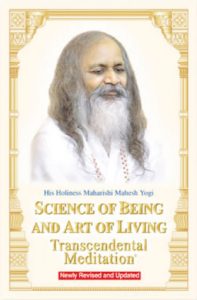
I also found that there were experiences like mine recorded in virtually all cultures of the world for millennia. What a thrill it was finally to have some intellectual understanding about this experience and a community who understood what it was and loved talking about it!
I learned that, far from being “unattainable”or simply a “dream,” transcending to bliss is easy and effortless, and most importantly, completely natural. Once a person has learned the simple technique of TM, the mind naturally follows its tendency to go towards increasing charm. No mental control is needed because the ocean of blissful consciousness at the basis of every mind spontaneously draws the attention inward in an easy, natural way. In transcending, the meditator also experiences his or her essential nature as pure consciousness, another term for Transcendental Consciousness.(3)
I learned there was a name for the unbounded awareness I had experienced as a child: Transcendental Consciousness. As a boy I waited in vain for the return of that experience. Now I had regular access to it through my TM practice.
By just the third day of the TM course of instruction, we learned that repeated experience of Transcendental Consciousness eventually would become an all-time, inner reality. This fourth state, restful alertness, would then be spontaneously present throughout the diurnal cycle of waking, dreaming, and sleeping. When this fourth state is established in this way, it would give rise to the fifth major state of consciousness, which Maharishi terms Cosmic Consciousness in his system of seven states of consciousness.
Maharishi also called this state “24-hour bliss.” (Mom, here it is! The Nirvana that Buddha had described, or the Kingdom of Heaven from within our Christian tradition!) I was excited, and I wanted to tell everyone. Enlightenment was not an unattainable dream or the sole domain of a few rare monks withdrawn from life. Maharishi provided a systematic technique that worked for everyone. Whichever lifestyle you choose will work just fine. You only need to add regular transcending to your schedule.
The Launch of Scientific Research on Enlightenment—Physiological Markers of Transcendental Consciousness
Maharishi used the word “habituation” to describe how Cosmic Consciousness develops. He said that repeated experience of Transcendental Consciousness (TC) “habituates” the nervous system to maintain TC more and more in activity, outside of meditation.
Habituation was a term that I, as a scientist, could relate to. In the laboratory of my own experience, I was feeling that the blissful effects of meditation were indeed lasting into activity. Maybe the mind could not be directly measured in the laboratory as psychology had found, but perhaps physiological changes associated with transcending and Transcendental Consciousness could be. But what were the effects of TC?
Habituation was a term that I as a scientist could relate to. In the laboratory of my own experience, I was feeling that the blissful effects of meditation were indeed lasting into activity.
The answer came on March 27, 1970, two weeks after I learned TM, in the historic publication in Science, the flagship journal of the American Association for the Advancement of Science, of Robert Keith Wallace’s paper “Physiological effects of Transcendental Meditation.”(4) This research was based on Dr. Wallace’s doctoral dissertation at UCLA, in which he showed that Transcendental Consciousness has a unique physiological pattern that distinguishes it from waking, dreaming, and sleeping. It was a fourth major state of consciousness, just as the ancient Vedic literature had said.
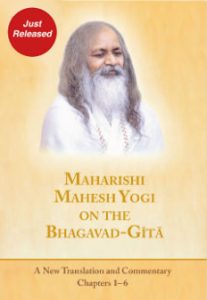
Dr. Wallace found TC to be a state of restful alertness, combining characteristics of sleep and waking states. It was similar to sleep in that breathing and heart rate slowed down, metabolic rate and plasma lactate decreased, and skin resistance increased, but these changes occurred much more quickly during TM than sleep. Even more importantly, the brain waves indicated a state of inner awareness, not sleep, specifically, frontal dominant 9 Hz alpha1 EEG increased. This was the first time such a state had been scientifically described.
In one stroke, the 500-year-old world of Western science had begun to catch up with the thousands-of-years-old wisdom of Vedic India. Dr. Wallace quickly nailed the point home by publishing papers in two more of the world’s top scientific journals, the American Journal of Physiology(5) and Scientific American.(6) Scientists had already worked out the physiology of waking, dreaming, and sleeping, and now here comes a fourth state of Transcendental Consciousness to be added.
Dr. Wallace found Transcendental Consciousness to be a state of restful alertness… This was the first time such a state had been scientifically described.
Science was now expanding to embrace enlightenment into its fold. Maharishi’s descriptions of higher states of consciousness were research hypotheses that could be tested in the laboratory. Moreover, as Dr. Wallace pointed out, because TM was taught in the same systematic and effective way worldwide, subjects were available everywhere. Dr. Wallace’s lead was being followed around the world with research springing up in 33 countries. We were off and running in a global scientific exploration of enlightenment!
The First Scientific Hints of Cosmic Consciousness: Autonomic Stability
At the time, I was teaching experimental psychology at the University of Texas at El Paso, and some of my students were TM meditators. I found an old lie detector machine in the department storeroom, fixed it up, and did a class demonstration on habituation of stress to loud tones. I was studying the startle response and measuring the skin resistance response (SSR). The meditators startled alright, but not until I blasted them with a 100 db 1,000 Hz tone—as my wife Rhoda can attest.
But with repeated presentations of the tone, the TM meditators soon stopped responding, whereas the non-meditators in the class tended to keep on showing stress responses over and over again. We were seeing more rapid habituation of the stress response among people who practice TM. This was the first evidence that meditation of any kind could change the way a person responds to stress.
Then I found something else as well. If you increase the sensitivity of the measuring apparatus, there are spontaneous skin resistance responses (SSRs), which occur independently of ambient noise or movements by the subject. I began to read everything I could find on the subject and discovered that the frequency of spontaneous SSR is one way of defining the stress level of an individual. Studies showed that when a person is angry or fearful, or when levels of the stress hormones adrenaline or noradrenaline increase, the frequency of SSRs rises. Moreover, some individuals consistently show lower frequencies of SSRs than others. We all know people like that—calm, collected, happy.
We were seeing more rapid habituation of the stress response among people who practice TM. This was the first evidence that meditation of any kind could change the way a person responds to stress.
The implications were huge! Studies show that people with fewer SSRs are better able to withstand stresses of various kinds, such as g-force acceleration in a human centrifuge in a U.S. Air Force study. They also score higher on Barron’s Ego Strength scale, a psychological test that measures the general ability to cope with environmental pressures. Other research showed that they are less impulsive on motor tasks and more field independent, a measure of the ability to quickly find a target stimulus camouflaged in a complex background.
Other studies correlated people with greater autonomic stability, defined in terms of the frequency of SSRs, with being more self-organizing and clear-thinking, as well as with being leaders, not followers. They were also found to be less prone to aversive conditioning—that is, they could not be pushed and pulled around as much by threats. This corresponded to my experience that I no longer felt compelled to clean my plate when I felt full. This was a small experience, but it was just the tip of the iceberg of a total transformation that was going on.
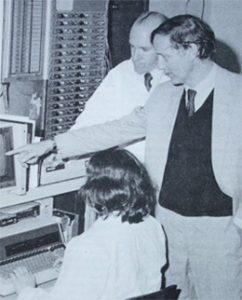
Dr. Orme-Johnson looking at research results in the 1970s
Rapid recovery from stressors and fewer SSRs were just two different ways of measuring the stability of a system. It made sense. The amount of stress people carry around with them interacts with how they respond to the environment. If we are feeling harried and our computer breaks, we are much more likely to throw a tantrum than if we are well rested and calm when it happens.
I expanded my classroom demonstration to a full study and published it in 1973 in Psychosomatic Medicine, the oldest and most prestigious journal on mind-body medicine.(7)
I now saw in autonomic stability that my personal experiences, the traditional knowledge of enlightenment (such as equanimity in pleasure and pain), and the scientific research (becoming more independent from one’s conditioning history), all began to converge on something that was measureable in the laboratory: autonomic stability. Autonomic stability was a way to measure reduction of stress in a person and the growth of the stability aspect of Cosmic Consciousness—Nirvana. It was also a way to track the progress towards “he whom these contacts do not disturb,” as the Bhagavad Gita puts it.(2)
I now saw in autonomic stability that my personal experiences, the traditional knowledge of enlightenment (such as equanimity in pleasure and pain), and the scientific research (becoming more independent from one’s conditioning history), all began to converge on something that was measureable in the laboratory: autonomic stability.
The Science of Enlightenment Begins
One day I had all my reprints spread out on a big conference table and my office mate, a graduate student in literature, asked me what I was doing. I explained and then boldly told him “this is the beginning of the end to psychosomatic disease.” His eyes widened, and he was impressed.
Two years later, while on my TM Teacher Training Course in Fuiggi Fonte, Italy, I had an opportunity to present this research to Maharishi along with Dr. Wallace, who by that time had become my good friend Keith. Maharishi was very impressed that autonomic stability was correlated with so many benefits. He commented that I had grabbed the eagle of enlightenment by the toe; if you’ve got it by the toe and pull it, the whole thing comes along with it.

Dr. Orme-Johnson explains his research on TM and autonomic stability to Maharishi in Fiuggi Fonte, Italy in June 1972, with (left to right) Peggy and Vincent Snell and Dr. R. Keith Wallace.
By that time several young Ph.D. scientists had gathered around Maharishi. Collectively we would go on to establish two universities: Maharishi International University (now Maharishi University of Management) and Maharishi European Research University, both dedicated to the experiential, theoretical, and empirical study of enlightenment.
In the next part this story, I will take you on a whirlwind tour, from my bird’s-eye-view as director of the research,* through the next 45 years and over 600 studies. I’ll highlight our key findings, the scientists who made the discoveries, and our interactions with Maharishi—who informed the research, ever expanded our minds, and kept us laughing, as the science of enlightenment unfolded at a rapid pace.
I didn’t have to become a rock star after all.
I’ll highlight our key findings, the scientists who made the discoveries, and our interactions with Maharishi—who informed the research, ever expanded our minds, and kept us laughing, as the science of enlightenment unfolded at a rapid pace
* I served as Director of Research of the International Center for Scientific Research, and Vice Chancellor of Maharishi European Research University; and at Maharishi University of Management, I was Head of the Psychology Department, Director of the Doctoral Program in Psychology, Co-Director of the Ph.D. program in the Physiology of Human Consciousness, and Dean of Research.
References
1. Maharishi Mahesh Yogi. The Science of Being and the Art of Living. New York: New American Library Inc.; 1963.
2. Maharishi Mahesh Yogi. On The Bhagavad-Gita: A New Translation and Commentary: Chapters 1-6. Baltimore: Penguin Books Inc.; 1969.
3. Maharishi Mahesh Yogi. Transcendental Meditation with Questions and Answers. Vlodrop, The Netherlands: Maharishi Foundation International, Maharishi Vedic University; 1967/2013.
4. Wallace RK. Physiological effects of Transcendental Meditation. Science. 1970;167:1751–4.
5. Wallace RK, Benson H, Wilson AF. A wakeful hypometabolic physiologic state. American Journal of Physiology. 1971;221:795-9.
6. Wallace RK. The Physiology of Meditation. Scientific American. 1972;226:84-90.
7. Orme-Johnson DW. Autonomic stability and Transcendental Meditation. Psychosomatic Medicine. 1973;35:341-9.




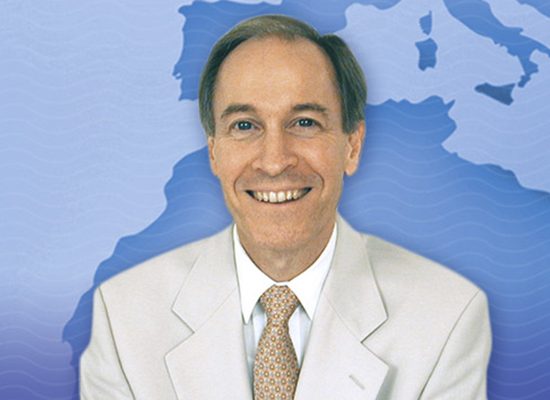
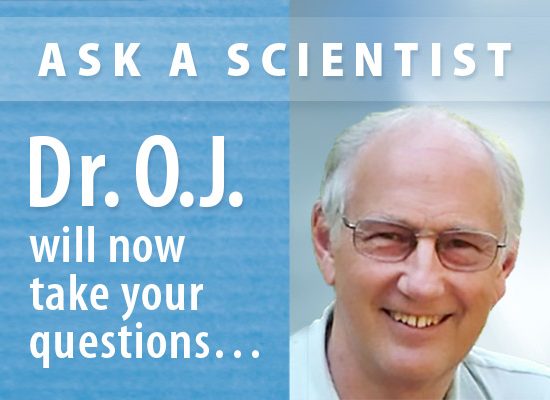
This is a great read! I’ve always appreciated David’s clear scientific mind, his ability to explore and express the finer aspects of Maharishi’s knowledge in concrete scientific terms, coupled with his perspective as an artist, seeing the whole evolving picture. As a writer, he has a way of drawing the reader into the charming way he expresses himself in words, sharing his personal story with us, and describing how that abstract wholeness manifests itself in our daily lives as we continue to meditate and grow in enlightenment together. I look forward to reading his book when it’s published.
Great. If everyone understood fully, there would be world peace. Thanks a lot. God bless.
Great article! Thank you!
Your announcement of the second part, and of your upcoming book, left me with increased frequency of SSRs… 🙂 Looking forward!
This is a fantastic “memoir” from the land of science and enlightenment, and I will share it widely!
What a wonderful story summed up in the photo of a young St. Francis with a sparrow perched on his finger!
I’ve been meditating since 1973. Today I practice the TM-Sidhi Program. I have Bachelor’s degrees in both Psychology and Computer Science. I lived in Fairfield, Iowa for nearly four years. Under different, ideal circumstances I would have pursued a doctorate in (Vedic?) Psychology at MIU and studied with you, but alas, that did not happen. Instead I left Fairfield and pursued work as a computer programmer/analyst, which I found lucrative but less satisfying (and frustrating at times). Such is my karma. But I’m working on it, and whatever path I follow in life, it will always be toward the light. I seek Enlightenment, by the TM/Vedic definition, and nowadays have a good reputation for a life-supporting hobby, that of making and distributing high-quality homemade ghee free of charge.
I’m glad we have people like you to pull these subtle but profound experiences out of the realm of myth and into the scrutiny of science. Your work in the sciences corroborates, validates, and (dare I say it?) proves the claims made by mystics over the centuries. Keep up the good work.
Thanks Suzanne. We look forward to your book on William Blake and his experiences of enlightenment, interpreted in the light of your own enlightened consciousness.
A beacon of light coming in a timely manner. Looking forward to the book.
Thanks Marek! And thanks for your help on my website.
Thanks David for sharing your great story!
Thanks Jamie. This story is having a happy ending.
David, I so appreciated your article. Having watched from afar in Seelisberg in the 70’s, from MUM and elsewhere, you truly are what TM says it helps culture. I had the experience of falling into unity before I started TM. TM is the tool to refine & rewire the nervous system so an experience becomes a new style of functioning as we develop higher consciousness beyond just a peak experience. Such a gift and a shout out for your expressing it so science can understand it.
Thank you Cheryl! Beautifully said.
Dr. David Orme-Johnson has always been an articulate spokesmen for TM. He puts science in simple terms and connects with meditators and nonmeditators alike. He does it with a compassionate tone. He is another gem that Maharishi employed during his time on our planet.
Thanks George, for the eloquent appreciation. You are an invincible force of Nature, having taught TM to some of the toughest characters on this planet, inmates at Folsom and San Quentin who had committed multiple homicides, and not only rescuing them back into society, but getting them to write a book about it and their beautiful experiences! And much much more. One of the wonderful thing about this journey has been getting to meet and work with so many great souls.
For those who enjoy reading stories about growth towards enlightenment, I recommend George Ellis’s excellent book. It is a compilation of his interviews with people about how they were transformed by silence coming into their lives through TM practice. All the stories together make a cosmic symphony with notes coming from many different kinds of people in different walks of life, a Symphony of Silence. It’s on Amazon.com.
Ellis GA, editor. A Symphony of Silence: An Enlightened Vision. North Charleston, SC: CreateSpace; 2012.
Dear Dr. Orme-Johnson. Just a note to say “Hello”. I remember taking a summer class with you at the Univ. of Wisc., Madison. Very small group around a table in one of the buildings over on Bascom Hill. A class about consciousness and enlightenment, though don’t remember the exact title. Maybe 1973 or ’74??? Had just learned TM. All so long ago! Your students are still ‘out there’ and remember. Thanks!
Thanks Jamie. My brother Bill was a post doc in biochemistry there and I came to visit him from time to time. I may have spoken to your class about TM. I hope you have been regular in your TM practice.
Wonderful writing, David! I’m looking forward to your book.
Thanks Jim!
What a wonderful and inspiring story of your journey! You are truly a man of full heart and full mind, and a role model for all scientists. I can’t wait for the next installment and the book to come.
Thanks Gary, and thanks for all your support of TM as a medical doctor over the years.
Thank you for documenting your experiences. Maharishi’s programs and books have been my constant and consistent companions over the years, keeping me grounded and supported through all kinds of challenges. People think I am unbreakable and very lucky!! Everyone knows I practice TM but I am just focused on my own enlightenment and what others choose is up to them. Scientific research was my “proof” that it was safe to learn TM in 1972. What a blessed gift. Jai Guru Dev.
Thanks Diane. The research was like a sign over the door that said it’s OK to come in. But the reason people learn TM and keep practicing is their direct experiences, I have found.
Congratulations. This is a must read! You reminded me of some experiences I too had as a young boy. Thanks for writing this David!
Write your experiences down, Garry. It is historic.
David-ji, that is what I think of thee! You are totally awesome! With you and Rhoda, as the wife of Clint Evans, and with Heathere and Bhavani (Born in Weggis, Switzerland), I watched your shyness dissolve over the years of presentations, through MERU, during the Scientific Symposiums. You shine like the star you are. Looking forward to the sequel!
Thanks Candace! The fun continues!
What a beautiful recounting of a scientist’s personal journey of spiritual / scientific advancement. It was my pleasure to meet you on a silence course in Heavenly Mountain years ago. I have always appreciated your work.
Thanks Carlos!
You hit home with me when you stated, “The amount of stress people carry around with them interacts with how they respond to the environment.” I have found with the practice of TM the stress (or as I refer to it, baggage) no longer controls my outlook nor engagement with the world around me. Actually, I am more engaged with the world today than at any time prior to TM.
Thanks John. “Improved interaction with the environment” is how Maharishi interpreted my research on rapid habituation. It is a core benefit. There is much additional evidence for this beyond my original study. Enlightenment and growth in its direction could be viewed in the context of Darwinian evolutionary theory as a higher form of adaptation that increases chances of surviving challenges. At its highest level, the development of what Maharishi calls Unity Consciousness, the “environment” is the infinite field of pure consciousness at the basis of everything and the person is That pure consciousness, and the master of That, because all is nothing other than one’s Self. It will be a while before science catches up to that level.
Dear David, What a Life!!! My favorite psychologist! You are St.Francis incarnate and so much more. I could relate to some of your mystical experiences, which are difficult to share with others. I can’t wait for part 2!
Thanks David. Don’t call your experiences “mystical”! They’re just the normal product of normal, natural human development. You should write them up.
And thank you for the books you have created bringing out the practical benefits of growth in the direction of enlightenment.
O’Connell DF, Alexander CN, editors. Self Recovery—Treating Addictions Using Transcendental Meditation and Maharishi Ayur-Veda. Binghamton, NY: Harrington Park Press; 1994.
O’Connell D, Bevvino DL, editors. Prescribing Health: Transcendental Meditation in Contemporary Medical Care. New York: Rowman & Littlefield; 2014.
It occurred to me 40 or more years ago that for TM results to be validated and accepted in the Western world, there must be objective data, not only for short term results but long term as well. Literally with every meditation it seems to me that the experience is so powerful and profound that surely there must be a variety of brain imaging, pulmonary functions, and autonomic function testing that can show the practitioner the cumulative results of their practice. But then, every meditator already knows this. Otherwise, why in the world would someone be doing this after 45 years.
Thanks Larry. Yes, we all know we practice TM because it works. But the Western mind is suspicious of anything that might look like uncritical adherence to dogma. This is because rationalism and science had a long hard fight to drag civilization out of the repressive religious and philosophical dogmas of the Dark Ages.
And it does need to be proven that there are higher levels of human development, so we quietly keep on doing research. And the skeptics and tough reviewers have always helped us take our research to a higher level to meet their criticisms. They are an absolutely essential element of the scientific enterprise.
What is happening now is that TM is being shown to be a highly effective tool for rehabilitation of the most desperate areas of society, abandoned children, battered women, soldiers and prisoners crushed by PTSD symptoms, and this has created a lot of acceptance. Everyone wants to eradicate poverty and suffering in the world and many people have dedicated their lives to it and are doing great work. TM is giving them a powerful tool to work with, and this is being appreciated more and more as the science on it verifies the benefits people are experiencing.
After reading this I regret that when I was part of C.E.G. at MIU in 1982 I did not accept David Orme-Johnson’s invitation to work with him as a research assistant since I was a clinical psychologist.
Thanks Steve. Looking back, we could have used more purely psychological studies on what happens with the growth of enlightenment. We have some, but our focus was on objective physiological measures to try to convince the scientific community that enlightenment was 1) different from the usual waking dreaming and sleeping experiences, and 2) beneficial, and not “altered” or pathological, which were some of the boxes they tried to put us in.
Absolutely brilliant, and so inspiring. Thank you!
Thanks for the appreciation, Andrea!
David-ji! You are such a beacon of light in this wacky world. I treasure the conversations I have had with you and Rhoda over the years and look forward to the possilbility of seeing you again. This is a tremendous and joyous article to read and I am eager for the continuation. Thanks for everything you have done to expand the knowledge of how this simple technique can have such profound effects on all areas of life. Namaste and Jai Guru Dev Donnie
Thanks Don. This is the beginning of a book I am writing on Maharishi and how the scientific research on enlightenment evolved.
I love this step-by-step account. As a young TMer with a science background, every new piece of research was a wonderful confirmation of the benefits and mechanics of the practice. Look forward to the book.